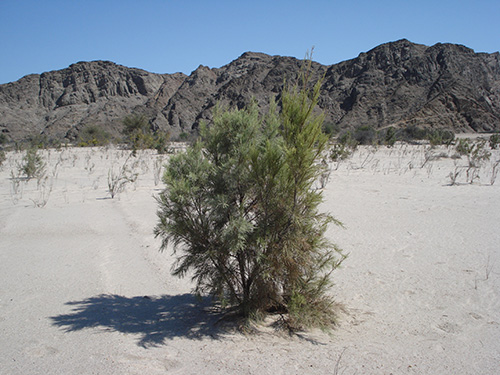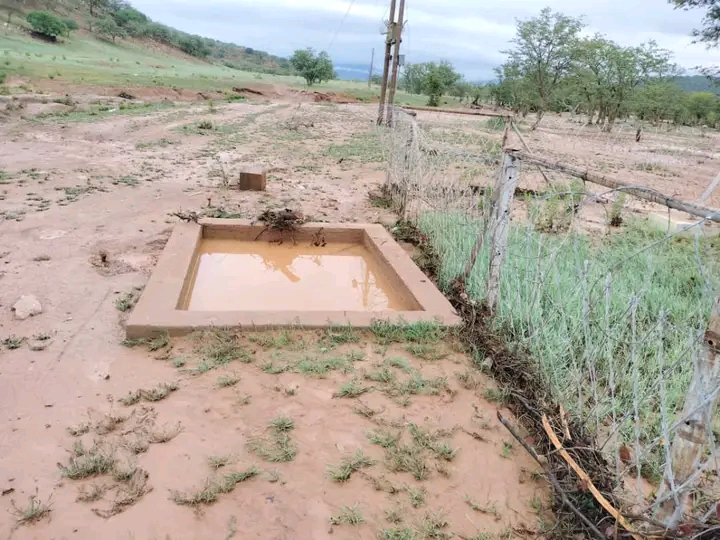LUISE HOFFMANNAN EVERGREEN, untidy shrub or small tree, the tamarisk commonly occurs in dense stands in many dry water courses in the Namib, in other moist brackish areas and in dune depressions. The scale-like, tightly overlapping grey-green leaves look similar to those of a cypress tree.
Names: G. Tamariske A. dawib, abiekwasgeelhout H. omungwati; N/D. dawe.b/s; Hi. Omuundje. Tamarix refers to the river Tamaris in Spain, while usneoides means ‘like the beard moss’, which hangs from trees like long beards similar to the hanging branches of the tamarisk. ‘Onguati’, the name of a railway siding north of Usakos, is derived from the Otjiherero name, while several farms in the Keetmanshoop and Maltahöhe districts are called ‘daweb’ after the Nama/Damara name. Another Nama name ‘abiekwa’ apparently means ‚robbers’ who allegedly made their bows of the wood of these trees.
The tamarisk occurs in southern Namibia and in a narrowing strip along the escarpment up to the Kunene River. It does well on brackish soil and is often found right in the middle of dry river beds e.g. the mouth of the Swakop River. After being buried under sand and silt by a flood, it sprouts new shoots and continues to grow.
The shallow spreading roots sprout buds, which develop into new shrubs next to the parent plant, thus forming thickets. The tamarisk also has a deep taproot. Due to circular leaf scars the twigs look as though jointed.
In the cool morning hours the tiny scale-like leaves appear green and damp. In the heat of the day they turn blue-green or grey-green due to extruding a thin layer of powdery salt, which easily rubs of and tastes bitter. In this way they get rid of the salt they take up with the brackish water. The whitish layer of salt also reflects the heat and reduces evaporation.
The indigenous tamarisk has large numbers of small white to cream coloured flowers on branched sprays during March to April. The pink flowering tamarisk found in gardens in Swakopmund and elsewhere seems to be a cross between the local and exotic species.
The fruit are small capsules that release large numbers of tiny, tufted seeds when ripe. Many insects frequent the tamarisk and longish cone like structures are not fruit but insect galls. Placed in a box in a warm place, these galls will wriggle and jump about similar to the fruit of the tamboti (Spirostachys africana).
In its extreme habitat the tamarisk is a valuable shade tree. It is sometimes browsed by live stock and game and provides shade and shelter for a variety of birds. The wood burns with an aromatic scent. Tamarisks are frequently planted as windbreaks and to stabilise dunes.
A different tamarisk species, common around the Mediterranean, is often attacked by a scale insect, which sucks its sap and then excretes a liquid, which crystallises along the branches into sweet, aromatic and pleasant tasting beads that melt in the heat of the day. Some experts think that these beads are the „manna” mentioned in the Bible.
With a little care the tamarisk can become a decorative tree with graceful hanging branches and is well suited to alkaline soils in dry areas.
Stay informed with The Namibian – your source for credible journalism. Get in-depth reporting and opinions for
only N$85 a month. Invest in journalism, invest in democracy –
Subscribe Now!










